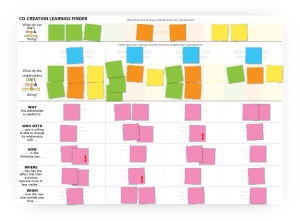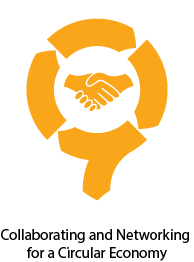About the tool
With the Co-creation Learnings Finder you step into the shoes of the stakeholder. The tool supports identifying the critical assumptions in regards to what the stakeholders need to start, stop and continue doing to transition from the current chain to a (more) circular one. The tool can help in understanding what should change from the perspective of your company and for relevant stakeholders. It can also identify risks and critical assumptions that warrant verification with pilots or experiments.
How to apply the tool?
Step 1: Add the stakeholders involved in the keystone activity
Focus on those stakeholders with the largest or key roles.
Step 2: Identify what your company needs to START, STOP and CONTINUE doing
Compare the keystone activity in the new circular value chain with current processes and procedures within your company. What needs changing? Add these to the top of the diagram.
Step 3: Identify what the stakeholders need to START, STOP and CONTINUE doing
The same as the previous step, but now from the perspective of the stakeholders. What do they need to change? Continue until this has been done for all the stakeholders included in the analysis.
Step 4: Articulate assumptions
For each stakeholder articulate WHY this stakeholder is needed, WHO they need to change their relationship with, HOW that relationship will change, what the impact is on the visibility of their activities and how you anticipate that their role will change over time. These are your assumptions: you assume that the stakeholder is willing and able to do these things.
Step 5: Identify critical assumptions
Some of the assumptions you listed are more risky than others. Identify – through placing stickies, for example – which of these assumptions are critical.
When to apply the tool?
The Co-creation Learnings Finder should be used in the last phase of the process to help in establishing how the transition would happen and how to work with stakeholders.

The Co-creation Learnings Finder is one of the tools presented in the CIRCit project to support various circular value chain configurations, seeking innovation through stakeholder collaboration (WB6).
Read more about the results of this focus area, explore other tools which can help in Collaborating and Networking for a Circular Economy and download the inspiring workbook here.
Downloads


